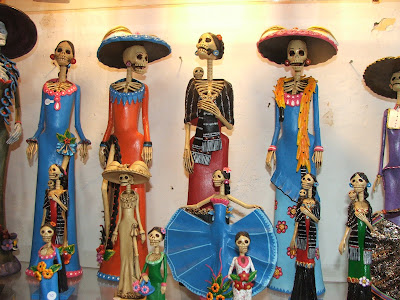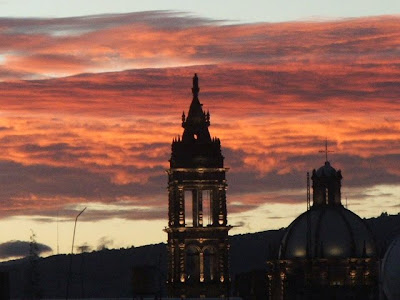 Those of us who migrate to Mexico in search of warmth and comfort share the characteristics of all immigrants who go to a new place to seek a good life. First generation immigrants seldom completely assimilate into their new culture; instead, they tend to obtain their support from others who are in similar circumstances. Accordingly, the expatriate community in our town may be small, but we form friendships quickly and socialize often. Isolated from our north of the border families, we tend to develop close family-like affiliations with our friends here.
Those of us who migrate to Mexico in search of warmth and comfort share the characteristics of all immigrants who go to a new place to seek a good life. First generation immigrants seldom completely assimilate into their new culture; instead, they tend to obtain their support from others who are in similar circumstances. Accordingly, the expatriate community in our town may be small, but we form friendships quickly and socialize often. Isolated from our north of the border families, we tend to develop close family-like affiliations with our friends here.When we met our friends John and Lisa Ozzello a few years ago, we knew that we had found a couple with whom we shared common beliefs, values and experiences. John and Lisa came here from Santa Fe, New Mexico to establish a home health agency and a hospice service. Lisa was a nurse and John, like Jerry, was a bit of an eccentric - he had made his living painting houses, advocating for the disabled and managing a number of nonprofit agencies.
During the month of May this year, many of our friends (and us) came down with unusual upper respiratory infections that were difficult to shake. Not only did we have sore throats and stuffy noses, we all felt tired and achy and miserable for about three weeks. But we all recovered. Except John.
We saw John on May 17, when he stopped by our house to return a flash drive with some movies on it that I had downloaded for them. He stood back from the gate and told us not to come too close - he was really sick and didn't want to spread it.
The next morning, John had a terrible headache, which progressed rapidly to uncontrollable vomiting and collapse into unconsciousness. On the advice of our local doctor, Lisa rushed him to Amerimed Hospital in Vallarta, about a half hour's drive. The doctors there first suspected a stroke, but a CAT scan ruled that out.
Within a few hours, the doctors confirmed that John had bacterial meningitis, a severe and often fatal infection of the tissues that surround the brain and spinal cord. Apparently, the infection in his sinuses found a breach between the sinus cavity and the brain, reaching through the thin membranes and spreading into his spinal fluid. This was likely a result of an injury he suffered while climbing mountains in the Himalayas back in the 1970s.
The doctors gave him a 50-50 chance of living through the next 48 hours. He made it through that critical window, and in the weeks that followed, he survived several other crises as the acute phase of the illness passed and one complication after another occurred, including additional drug-resistant infections, an inability to breathe that required a tracheotomy and leakage of cerebrospinal fluid from his sinuses, allowing his cranial cavity to fill with air.
I started out sending regular email updates to John and Lisas' friends and family members. When the number of addresses exceeded 100, I started a website on caringbridge.com to keep everyone informed and allow them to leave messages for John and Lisa. A detailed account of everything that has happened to John is posted in the "journal" section. You can find John's website here: http://www.caringbridge.org/visit/johnozzello
For the last several weeks, our lives have basically revolved around trying to provide support for Lisa - cooking meals, providing transport to the hospital and giving her support and comfort. Justine has been a really special help - sitting many, many nights with John in the hospital.
After 39 days in the hospital, most of it in intensive care, and several emergency surgeries, Lisa brought John home, where he could continue his journey in peace and greater comfort. On July 7, John ended his journey.
Tonight, July 9, we gathered to pay tribute to John and to celebrate his remarkable life. As I looked about at the people gathered there, I realized how fortunate we are to have landed here, among so many kind and giving people. I realize that we are, indeed, a community. And we are at home.





















































